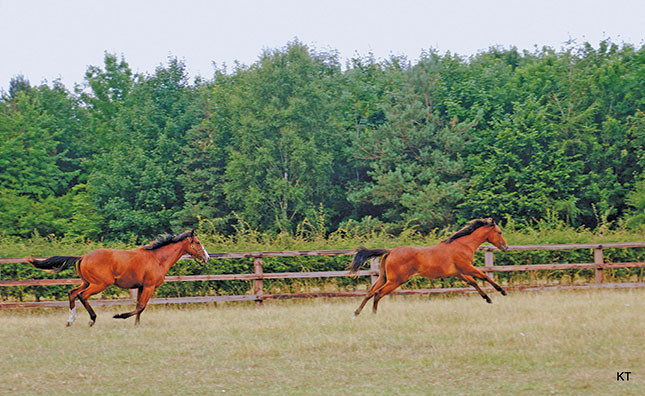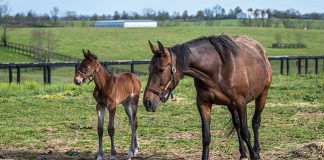
Photo: Wikimedia Commons
Everyone has seen cowboys in films leading one horse while riding another. The horse being led could be a pack horse, carrying supplies for a trip to the other side of the ranch, or a child’s pony.
‘Ponying’ a horse is often used when training a young horse before it is ridden to get it fit without having to lunge it. Ponying is not a skill commonly used in South Africa, but is something worthwhile learning.
Training starts when the horse is a yearling (about 18 months old). It is brought in from the field and kept in a small pen or stable with one or two other yearlings.
Halter training comes first. Each yearling is roped, or caught, depending on how tame it is, and a rope halter is put on.
The yearling is taught to work on a halter and to be handled all over its body without spooking. This is called ‘gentling’. Sometimes a round pen may be used for very spooky yearlings; often two or three are round-penned at the same time to give them a feeling of being in a herd as this makes them feel more secure.
Teaching the yearling to accept a halter can be done through positive reinforcement by putting the halter on at feeding time and leading the yearling to the filled feed bucket.
While eating, the yearling can be handled and brushed and taught to pick up all four legs for its hooves to be trimmed. Farriery for cow horses is usually done on the ranch by those working with cattle. Only show horses see real farriers when they are sent to a trainer.
Ponying
The ponying is started in a round pen, once the yearling is calm when being led by a handler. A pony horse is a cow horse that is used to having the rider lead one or more horses.
The rider on the pony horse has a handler lead the yearling behind and slightly to one side of the pony horse. Once it is calm, the rider on the pony horse takes the lead rein and the helper walks on the inside of the yearling to keep it up close to the pony horse.
Once it is settled, the handler moves to the centre of the round pen in case of trouble and the rider leads the yearling around, first at a walk and then at a trot. Eventually, the yearling will work on both sides of the pony horse and follow.
A saddle or pack saddle can be introduced at this stage through the use of gradual habituation. The youngster is also ponied out into the bush so that it moves towards the pony horse and rider if puzzled or insecure.
Ponying becomes a substitute for lunging in working cow horses that are used on-farm. They can carry light packs from about two years old and are ridden only when they turn three.
It is possible to pony more than one horse at a time, but in general, when there are several pack horses, each has its own halter.
Pack horses just follow each other and the pony horse in a line, as each has been taught to pony in turn. This foments a herd mentality.
Dr Mac is an academic, a practising equine veterinarian and a stud owner.











